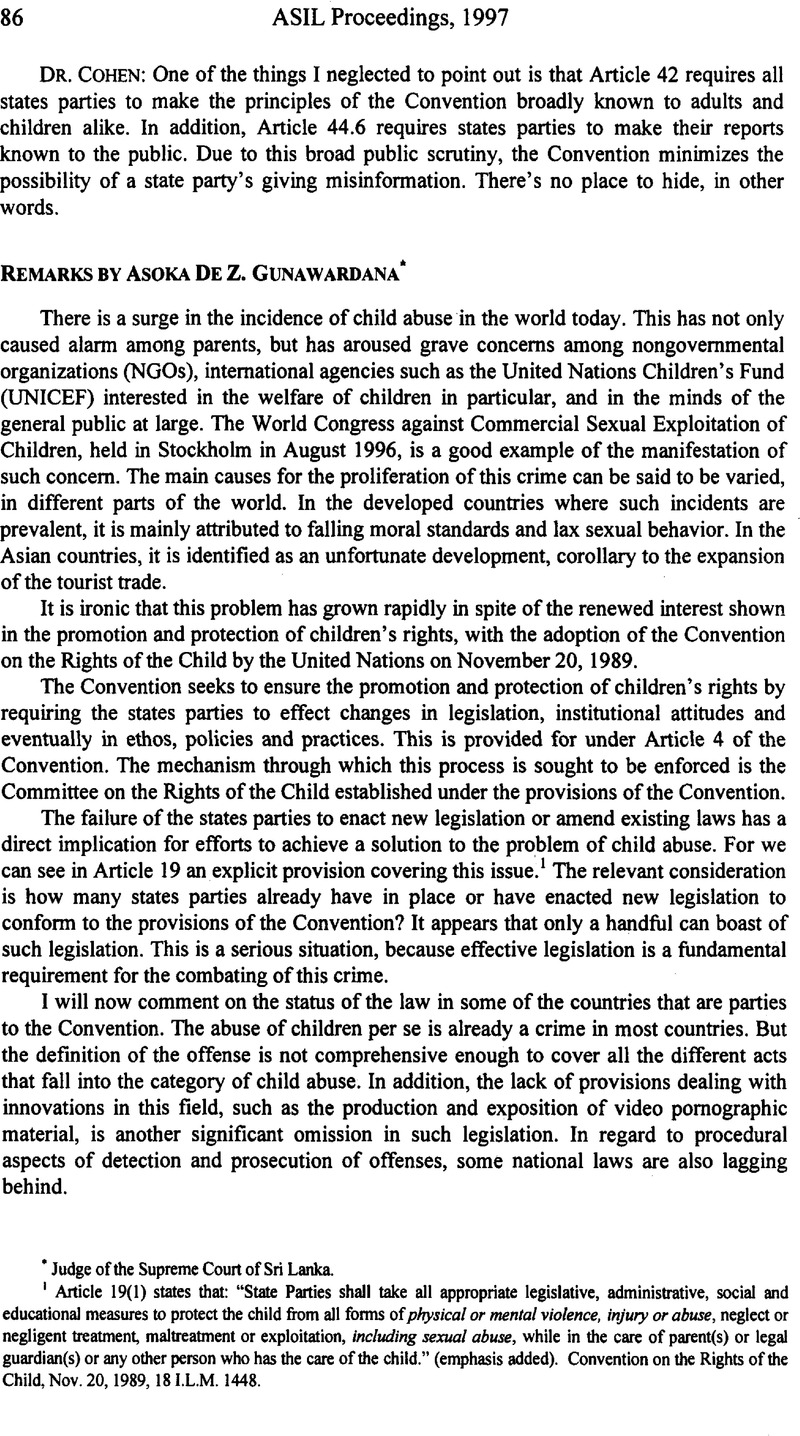No CrossRef data available.
Published online by Cambridge University Press: 28 February 2017

1 Article 19(1) states that: “State Patties shall take all appropriate legislative, administrative, social and educational measures to protect the child from all forms of physical or mental violence, injury or abuse, neglect or negligent treatment, maltreatment or exploitation, including sexual abuse, while in the care of parent(s) or legal guardian(s) or any other person who has the care of the child.” (emphasis added). Convention on the Rights of the Child, Nov. 20, 1989, 18I.L.M. 1448.
2 Crimes (Child Sex Tourism) Amendment Act, 1994, no. 105 (Austl.); see also Australia Outlaws Child Sex Tourism, The Observer (Colombo, Sri Lanka), Oct. 2, 1994, at 3.
3 See Sri Lanka Penal Code (Amendment) Act No. 22 of 1995. Certified on Oct. 31, 1995.
4 UNICEF, The Progress of Nations 39 (1996).
5 Sex Tourists Prey on Sri Lanka ‘s Children, The Observer (Colombo, Sri Lanka), Mar. 18, 1994, at 5.
6 In this context, it is pertinent to note that the provisions in Article 34 require the state parties to protect the child from all forms of sexual exploitation and sexual abuse and to take all appropriate national, bilateral and multilateral measures to prevent such abuse and exploitation.